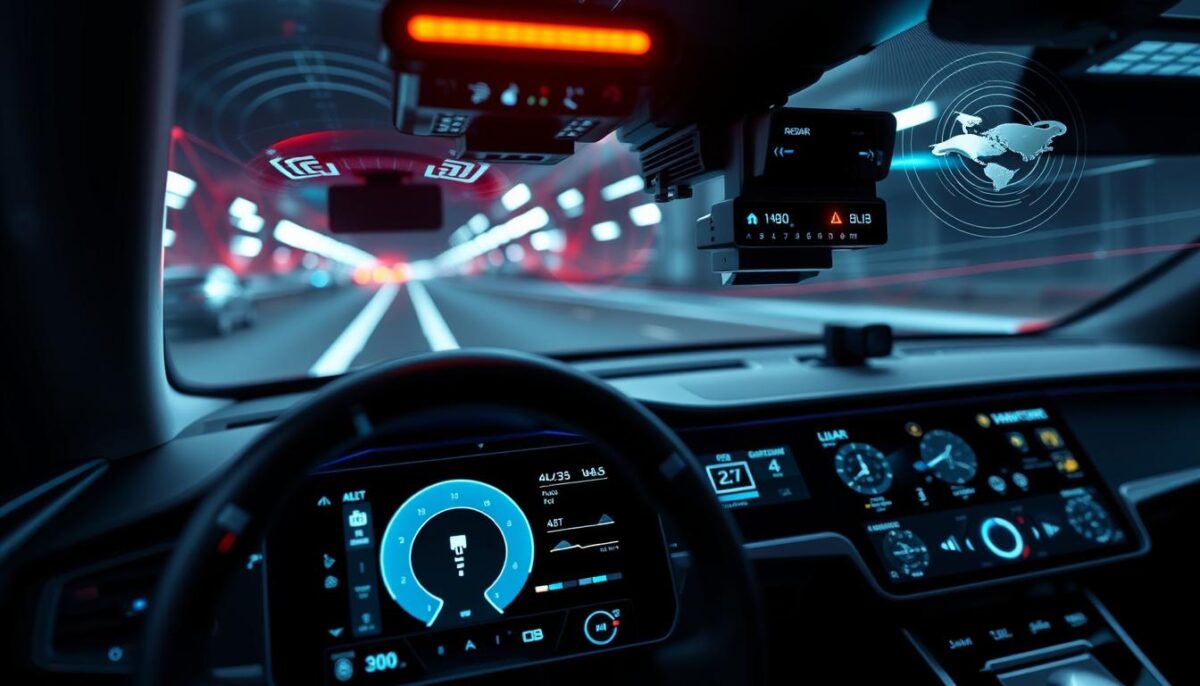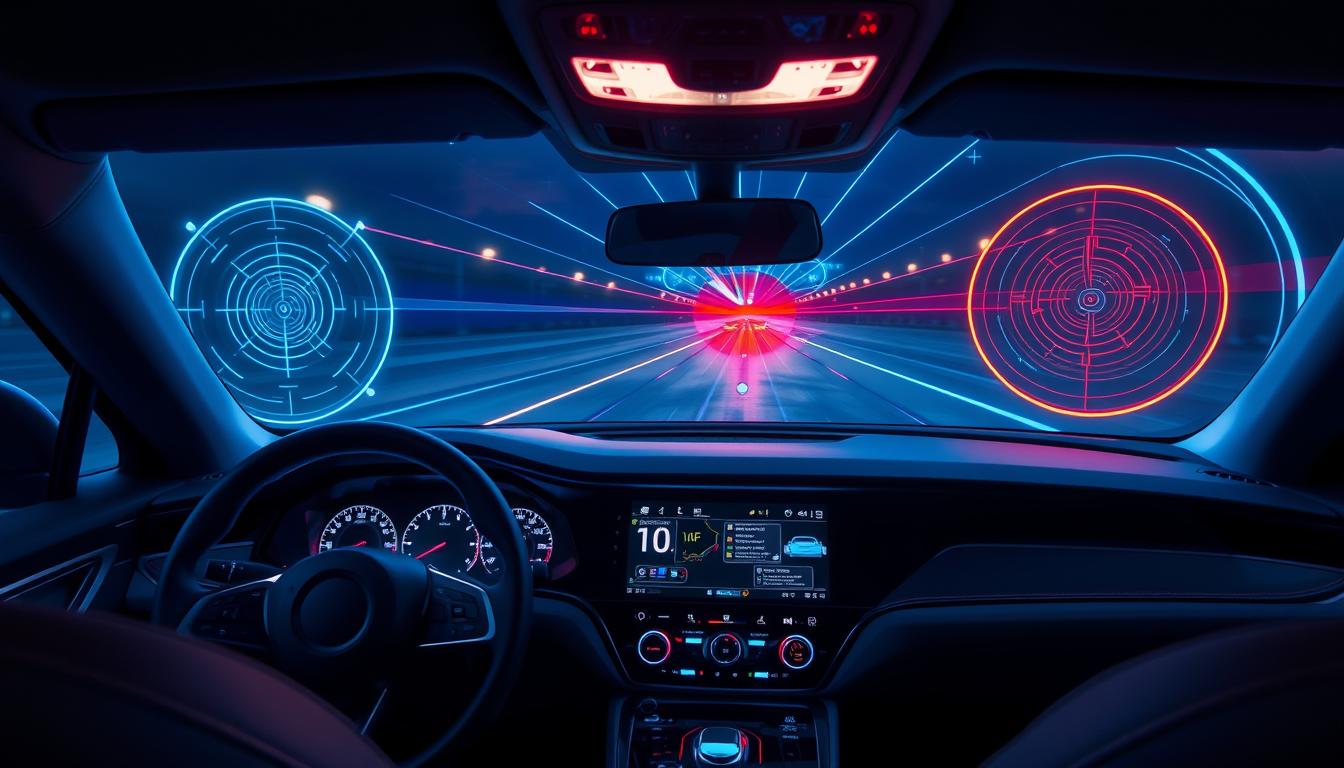In today’s automotive landscape, Advanced Driver Assistance Systems (ADAS) stand at the forefront of enhancing vehicle safety and driver convenience. By integrating advanced technologies such as radar technology, sensors, and cameras, these systems facilitate a semi-autonomous driving experience. Radar technology specifically plays a pivotal role in functionality, enabling vehicles to detect objects at greater distances with remarkable accuracy. Renowned companies like Bosch, Continental, and Mobileye are driving innovation in the ADAS market, ensuring that automated driving features are not only smart but also crucial for safer journeys.
Understanding Advanced Driver Assistance Systems
Advanced Driver Assistance Systems (ADAS) encompass a variety of driver assistance technologies designed to enhance vehicle safety systems. These systems play a crucial role in mitigating risks associated with driving. Common functionalities include adaptive cruise control, lane-keeping assistance, automatic emergency braking, and parking assistance. As vehicle technology evolves, the integration of ADAS becomes increasingly vital for preventing accidents on the road.
What Are Advanced Driver Assistance Systems?
The ADAS definition incorporates technologies that assist drivers during their travels. These innovations leverage data from various sources to support and improve the driving experience. For instance, certain ADAS functionalities analyze road conditions and driver behavior, providing real-time feedback to enhance overall safety. As consumer awareness grows, so does the demand for vehicles equipped with advanced driver assistance technologies.
Key Components of ADAS
Understanding the components of ADAS is essential for appreciating how these systems function. The primary elements include:
- Sensors: Used to gather data about the vehicle’s surroundings, enhancing the system’s responsiveness.
- Cameras: These provide visual information, allowing for object recognition and monitoring of traffic signs.
- Radar Systems: Crucial for measuring speed and distances to nearby vehicles and obstacles, playing a central role in accident prevention.
When combined, these components create a sophisticated environment within the vehicle, capable of detecting potential hazards and responding effectively. Leading manufacturers such as Tesla, Ford, and Mercedes-Benz continually invest in these technologies to refine their ADAS offerings and provide enhanced safety features for drivers.

| Components | Functionality | Examples |
|---|---|---|
| Sensors | Gather environmental data | Lidar, Ultrasonic |
| Cameras | Object recognition and monitoring | Rearview Camera, Lane Sensors |
| Radar Systems | Measure speed and distance | Adaptive Cruise Control, Collision Warning |
Advanced Driver Assistance Systems: The Power of Radar
Advanced Driver Assistance Systems (ADAS) utilize radar technology to enhance vehicle safety significantly. This innovative technology excels in distance measurement and motion detection, vital for various ADAS radar applications. Through its ability to function reliably in different weather conditions, radar becomes an essential component in promoting safer driving experiences.
How Radar Technology Enhances Vehicle Safety
Radar technology plays a critical role in improving vehicle safety by offering precise measurements and reliable object detection. The effectiveness of radar enables it to identify obstacles well beyond typical visual ranges, contributing to accident avoidance strategies. An excellent example is adaptive cruise control, which adjusts vehicle speed based on the distance from the car ahead. This capability reduces the likelihood of rear-end collisions and underscores the radar technology benefits that enhance overall road safety.
Benefits of Radar in ADAS Applications
The advantages of radar in ADAS applications extend beyond its ability to operate in various environmental conditions. Key benefits include:
- High precision in real-time object detection, crucial for collision avoidance and blind-spot monitoring.
- Less vulnerability to adverse weather elements such as fog, rain, or dust, which enhances the reliability of the system.
- Increased driver confidence, knowing that automated driving technology remains functional in diverse conditions.
Prominent automotive manufacturers, such as Audi and BMW, are embracing radar technology to further advance their autonomous and semi-autonomous vehicle capabilities. This increasing adoption reflects a broader trend in the automotive industry, where the integration of radar solutions continues to drive innovation.
The Future of Radar in Advanced Driver Assistance Systems
The future of radar technology in Advanced Driver Assistance Systems (ADAS) is set to revolutionize vehicle safety and functionality. As manufacturers and researchers continue to innovate, advancements in ADAS will become more sophisticated, integrating radar with machine learning and artificial intelligence. This synergy is crucial for the development of fully automated vehicle systems, paving the way for a new era in transportation.
Companies are already exploring fusion techniques that combine radar, Lidar, and cameras, improving the fidelity of data collected about the driving environment. This multi-faceted approach enhances situational awareness, making it easier for vehicles to navigate complex scenarios safely. With the anticipated rise of autonomous vehicles, it’s clear that such technologies will become foundational in creating safer roads and more efficient transport systems.
Looking ahead to 2030, many industry experts predict that a significant number of vehicles will boast advanced levels of automation. The incorporation of advanced radar systems is expected to play a critical role in this transformation, leading to considerable improvements in road safety and efficiency. As we move forward, embracing the potential of radar technology will be essential for the future of mobility.




